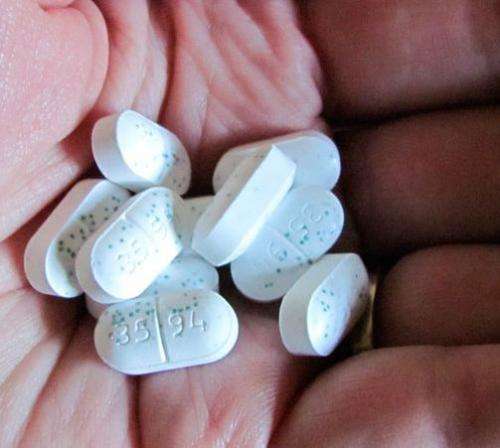Credit: Susan Buck Ms/Public Domain
In the latest issue of the journal Proceedings of the National Academy of Sciences (PNAS), a research group at Uppsala University presents a new, small-scale method that may become a smart shortcut for determining the bioavailability of a pharmaceutical drug within cells.
"Finding out how a therapeutic drug affects the body means having to consider many different factors that can influence the cells' internal environment. Our method may be a way of substantially facilitating this stage," says Professor Per Artursson.
The researcher led the joint study underway with colleagues at the Chemical Biology platform in SciLifeLab (created jointly by Uppsala and Stockholm Universities, Karolinska Institute and KTH Royal Institute of Technology) and GlaxoSmithKline in Stevenage, UK.
The majority of promising new drug candidates are effective only within the cells, but quick general methods of determining intracellular drug quantities are lacking. A team of researchers headed by the Drug Delivery Group at Uppsala University may now be on the track of a solution through a fast, small-scale method of determining a drug's bioavailability (the fraction available to work in biological processes) inside cultured cells. By measuring the unbound quantity of the drug in the cells, the method accounts for the drug partly "disappearing" when it binds to cell components where it cannot exert its intended effect. This "disappearing" proportion of the drug varies from one molecule to another and has hitherto been hard to predict, but can now be easily determined with the researchers' small-scale method.
The research group has also demonstrated that, measured with the new method, bioavailability can be used to predict the effects of the drug molecules in more advanced cell models for specific therapeutic areas such as cancer, inflammation and dementia disorders.
"It takes time to develop models for specific therapeutic areas, so our method may be especially useful in early stages of drug development. Major pharmaceutical drug companies have already shown great interest and the method is now being offered on the SciLifeLab Drug Discovery and Development platform," Artursson says.
The scientists are currently investigating whether the method can predict effects of drugs in the body, as well. This is more complicated than a cell culture. Since taking blood samples is simple while sampling tissue is considerably more difficult, bioavailability is often predicted on the basis of drug concentrations in the blood – a fairly blunt instrument.
The proportion of a drug entering the target cell may be either higher or lower than in the blood. The drug may, for example, bind to the cell's fat molecules, break down, or be transported out of the cell. These mechanisms reduce the available fraction of the drug inside the cell, i.e. its intracellular bioavailability. Retrospective correction factors must therefore often be introduced to allow for these mechanisms in the use of "pharmacokinetic models" to study a drug's route of administration into the body.
"Our preliminary studies show that replacing the correction factors with a simple determination of local bioavailability in the cells seems to be possible. But more experiments are required before we know how applicable our principle is at tissue and organism level. Clearly, intracellular bioavailability is on the way to becoming an important early instrument in pharmaceutical drug research," Artursson says.
"Prediction of intracellular exposure bridges the gap between target- and cell-based drug discovery," PNAS (Proceedings of the National Academy of Sciences, will be published online this week, 10-14 July 2017.
More information: Mateus et al; Prediction of intracellular exposure bridges the gap between target- and cell-based drug discovery, PNAS www.pnas.org/cgi/doi/10.1073/pnas.1701848114
Journal information: Proceedings of the National Academy of Sciences
Provided by Uppsala University





















